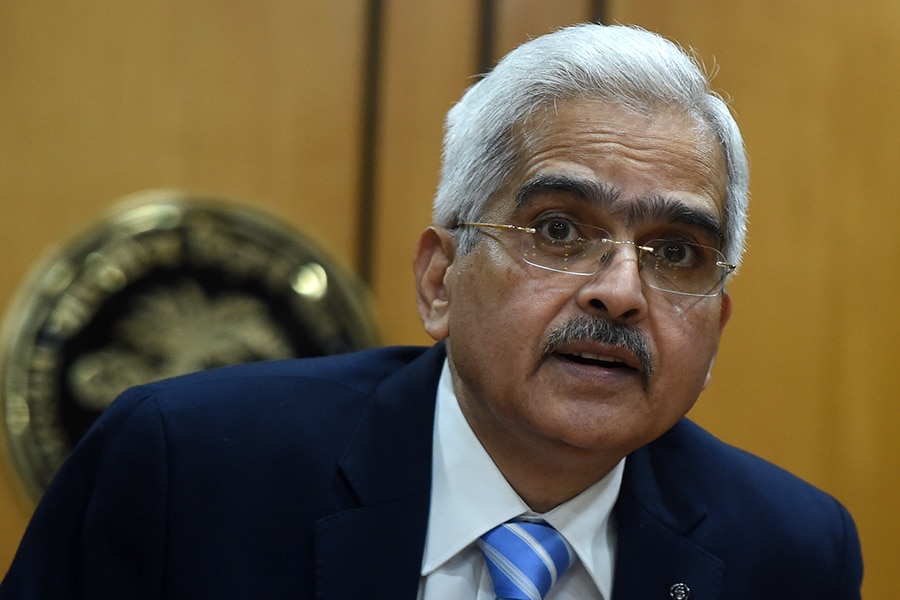RBI lowers reverse repo rate to incentivise banks to lend more
Central bank governor Shaktikanta Das announces liquidity boost for NBFCs, housing finance and micro-financiers, to tide through the Covid-19 crisis


 Central bank, governor, Shaktikanta Das
Central bank, governor, Shaktikanta Das
Image: Punit Paranjpe
The Reserve Bank of India (RBI) announced its second economic relief package on Friday, through a series of moves by which commercial banks have been nudged to start lending more a liquidity boost will be given to non-banking financial companies, housing finance firms and micro-financiers to tide through the tough current environment where their access to finance stands limited, thanks to a pandemic-lockdown.
The classification of a non-performing asset has also been clarified by the RBI, which extends the window for it to be considered a bad loan.
Investors cheered these moves with both the benchmark 30-share Sensex and the Nifty 50 indices moving up by approximately 1.75 percent during early afternoon trade. The possibility of more announcements from the RBI, and possibly even the government, in coming days, led to fresh buying.
The RBI on Tuesday said it has cut the reverse repo rate to 3.75 percent from an earlier 4 percent. The reverse repo is the rate at which RBI borrows money from commercial banks when there is excess liquidity. The banks earn an interest by parking their funds here.
“A lower interest rate on capital parked—a negative carry—might incentivise banks to start lending more," Sameer Narang, chief economist, Bank of Baroda. Though there is no direct connect, it might help banks take that decision to start lending more.
Economic activity in India continues to be at a standstill due to the lockdown imposed by the government, extended until May 3, to control the spread of the coronavirus. This has severely impacted the operations and finances of businesses across manufacturing and services.
In a move seen to assist non-banking financial companies (NBFCs), housing finance companies and micro-finance companies (MFIs), the RBI governor Shaktikanta Das said the bank will conduct targeted long-term repo operations (TLTRO 2.0) for an aggregate amount of Rs 50,000 crore."
The funds availed by banks under this scheme should be invested in investment grade bonds, commercial paper, and non-convertible debentures of NBFCs, with at least 50 percent of the total amount availed going to small and midsized NBFCs and MFIs, Das said. Additionally, another Rs 50,000 crore refinance window will be opened from NABARD, SIDBI and NHB which is expected to partly meet the requirements of NBFC-MFIs.
A study from Acuité Ratings had estimated that the top 11 companies in that segment will need refinancing to the extent of Rs. 10,000-20,000 crore to sustain their operations and service their existing debt instruments.
“The steps on TLTROs and refinance from financial institutions will go a long way to meet these short term liquidity gaps in the shadow bank sector and ensure their sustainability and therefore, financial stability in the crisis period," says Suman Chowdhury, Chief Analytical Officer at Acuité Ratings & Research.
Banks overall lend an amount in excess of Rs 7 lakh crore to the NBFCs in India.
The RBI also clarified further on the classification of non-performing assets (NPAs) of banks, in such a way that it effectively grants an extension of the NPA period to 180 days, up to May 31, 2020 from March 1, 2020. Banks have to provide an additional provisioning of 10 percent for those exposures under moratorium.
It means that for loans under moratorium, asset classification will be suspended. Both Narang and Chowdhury said that the RBI has yet to clarify on whether NBFCs should get a moratorium—as retail borrowers and small-businesses have the option to do—from banks. "‹
First Published: Apr 17, 2020, 13:47
Subscribe Now